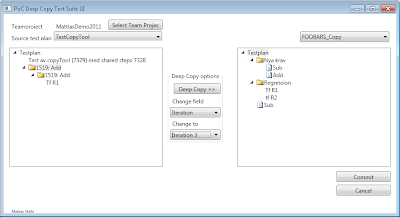ALM Rangers Branch Tool Visual Studio Extension
What we now released is a tool for standardized and automated implantation of branching strategies, and we put it right there you want it, on the context menu in source control explorer. By right clicking in your source tree, you can now implement the branching strategy of your choice in an easy, standardized and automated process. This is done by right click and select the ALM Rangers Branching Tooling menu.
The first step is to simply select your branch plan. The TFS Branch Tool present a list of available branch plans and provides a short description of them. Then you select a branch plan you get prompted for the parameters needed to implement the selected operation.
Once selected and all parameters is provided you can implement the action by clicking ok, sit back and enjoy while your branching operation is applied.
Customizable and extendable
But the best part is that you can both customize and extend the functionality. The Visual Studio extension relies on .branchplans files to define what operations to perform. The .branchplans files is xml based and can easily so you can easily edit the files to add commands or modify the branching operations.
Adding a ServicePack-Release branch plan
Creating an initial structure is a good thing, but that’s only done once. Hopefully you’re doing releases more often, and if you have a more advanced strategy for releases, it can be a lot of work to handle manually.
By creating a new branch plan for your release strategy you can use the tool to have that work automated. The tool will automatically pick up and adopt to your new branch plan and display your customized information as well as any arguments you defined for your branch plan.
It will then execute the actions you defined in your branch plan.
And provide you with the desired result in source control.























